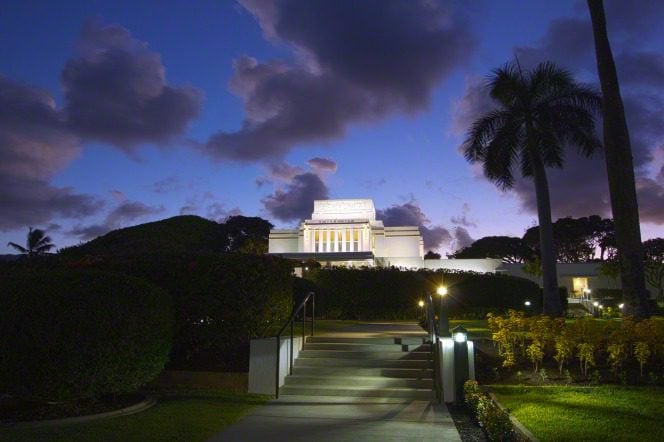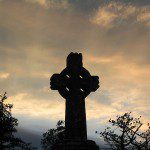
***
A new article by the indefatigable Matthew L. Bowen has just appeared in Interpreter: A Journal of Latter-day Saint Faith and Scholarship:
Abstract: Several of the Prophet Joseph Smith’s earliest revelations, beginning with Moroni’s appearance in 1823, quote the prophecy of Malachi 3:1 with the Lord “suddenly com[ing] to his temple” as “messenger of the covenant.” Malachi 3:1 and its quoted iterations in 3 Nephi 24:1; Doctrine and Covenants 36:8; 42:36; 133:2 not only impressed upon Joseph and early Church members the urgency of building a temple to which the Lord could come, but also presented him as the messenger of the Father’s restored covenant. Malachi’s prophecy concords with the restored portion of the “fulness of the record of John” and its “messenger” Christology in D&C 93:8 in which Jesus Christ is both “the messenger of salvation” (the “Word”) and the Message (also “the Word”). The ontological kinship of God the Father with Jesus, angels (literally messengers), and humankind in Joseph’s early revelations lays the groundwork for the doctrine of humankind’s coeternality with God (D&C 93:29), and the notion that through “worship” one can “come unto the Father in [Jesus’s] name, and in due time receive of his fulness” (D&C 93:19; cf. D&C 88:29). D&C 88 specifies missionary work and ritual washing of the feet as a means of becoming, through the atonement of Jesus Christ, “clean from the blood of this generation” (D&C 88:75, 85, 138). Such ritual washings continued as a part of the endowment that was revealed to Joseph Smith during the Nauvoo period. Missionary work itself constitutes a form of worship, and temple worship today continues to revolve around missionary work for the living (the endowment) and for the dead (ordinances). The endowment, like the visions in which prophets were given special missionary commissions, situates us ritually in the divine council, teaches us about the great Messenger of salvation, and empowers us to participate in his great mission of saving souls.
And the astonishing Kyler Rasmussen has provided a brief interpretive summation of Professor Bowen’s article:
“Interpreting Interpreter: Ich Bin Ein Malachi”
This post is a summary of the article ““The Messenger of Salvation”: The Messenger-Message Christology of D&C 93:8 and Its Implications for Latter-day Saint Missionary Work and Temple Worship” by Matthew L. Bowen in Volume 51 of Interpreter: A Journal of Latter-day Saint Faith and Scholarship.
The full article can be read at https://interpreterfoundation.org/the-messenger-of-salvation-the-messenger-message-christology-of-dc-938-and-its-implications-for-latter-day-saint-missionary-work-and-temple-worship/.
An introduction to the Interpreting Interpreter series is available at https://interpreterfoundation.org/interpreting-interpreter-on-abstracting-thought/.
“The Takeaway: Bowen frames Christ as Message and Messenger (malʾākî), with the temple being both the place that message is delivered and the means through which we ourselves can become messengers of Christ and his covenants.”
***
I would really like to see this. Perhaps some of you will be interested, too:
***
I had long known about the time, in late March 1832, when a mob of nearly forty men dragged Joseph Smith from his home in the middle of the night, beat him, tarred and feathered him, and attempted to poison him with a vial of nitric acid. He bore the scars for the rest of his life and, because of a tooth that broke when they were trying to force that vial into his mouth, spoke with a hissing “s” for many years (apparently until the German-born Jewish convert Alexander Neibaur, a dentist, fixed the tooth in Nauvoo).
But I hadn’t been aware of this aspect of the story:
The full extent of Joseph’s injuries that night is shown by a little-known account recorded by Joseph III, who must have heard the details from one or both of his parents. Joseph was so near dying that he had a near-death experience. He was “beaten into insensibility . . . and left for dead.” Joseph III related that Joseph’s “spirit seemed to leave his body, and that during the period of insensibility he consciously stood over his own body, feeling no pain, but seeing and hearing all that transpired.”
Karl Ricks Anderson, The Savior in Kirtland: Personal Accounts of Divine Manifestations (Salt Lake City: Deseret Book, 2012), 78-79, citing Joseph Smith III, in Recollections of the Pioneers of Lee Country (Illinois) (Dixon, IL: Inez A. Kennedy, 1893), 98.
Such out-of-body experiences have been extensively documented in recent decades. I’m struck by this one as an early specimen, but absolutely a textbook case. Some have suggested that at least some accounts of near-death experiences or out-of-body experiences have been influenced by, or even modeled upon, Raymond Moody’s important 1975 bestseller Life After Life. And I have to admit that at least some such accounts have struck me has having at least possibly been created under such an influence, rather in the fashion of painting by numbers. But that’s plainly impossible in this instance.
***
The noted biochemist Lewis Thomas was fascinated when he discovered that every species of animal to appear in the paleontological strata, as well as all those living today, is perfect according to its kind. Every type is expertly suited to fly or run or swim, to reproduce, and to be nourished in remarkably effective ways—not more or less adapted, but perfectly so; not clumsy at first and then skilled; not more less beautiful, but entirely so. We do not find awkward and crippled species in transitional stages in the past or in the present. [Thomas Dubay, The Evidential Power of Beauty: Science and Theology Meet (San Francisco: Ignatius Press, 1999), 12-13]
Thomas: “I cannot make my peace with the randomness doctrine: I cannot abide the notion of purposelessness and blind chance in nature. And yet I do not know what to put in its place for the quieting of my mind. It is absurd to say that a place like this place is absurd, when it contains, in front of our eyes, so many billions [sic] of different forms of life, each one in its way perfect.” (Cited at Dubay, The Evidential Power of Beauty, 24)












